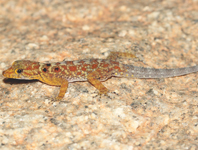Abstract
Stevenia gilasiani Ziegler, Gisondi & Cerretti, sp. nov. from western Iran is described and illustrated. Cladistic arguments are provided in order to give an explicit genus level affiliation for the new species. Stevenia gilasiani sp. nov. is the first rhinophorid characterized by male ventral sexual-patches on abdominal tergites 3, 4 and 5 and sternites 3 and 4, and is the only Stevenia characterized by two postpronotal setae instead of usual three. A comparison with all congeners is made.
References
Cerretti, P. (2010) I tachinidi della fauna italiana (Diptera Tachinidae), con chiave interattiva dei generi ovest paleartici. Vol. I & II. Cierre Edizioni, Verona, 573 pp. + 339 pp. + CD-ROM.
Cerretti, P., Di Giulio, A., Romani, R., Inclán, D.J., Whitmore, D., Di Giovanni, F., Scalici, M. & Minelli, A. (2015) First report
of exocrine epithelial glands in oestroid flies: the tachinid sexual patches (Diptera: Oestroidea: Tachinidae). Acta Zoologica, 96, 383–397.
https://doi.org/10.1111/azo.12085
Cerretti, P., Lo Giudice, G. & Pape, T. (2014) Remarkable Rhinophoridae in a growing generic genealogy (Diptera: Calyptratae, Oestroidea). Systematic Entomology, 39, 660–690.
https://doi.org/10.1111/syen.12080
Cerretti, P. & Pape, T. (2007) Two new species of European Stevenia Robineau-Desvoidy (Diptera: Rhinophoridae) and a key to the Palaearctic species. Zootaxa, 1624, 31–41.
https://doi.org/10.11646/zootaxa.1624.1.3
Crosskey, R.W. (1977) A review of the Rhinophoridae (Diptera) and a revision of the Afrotropical species. Bulletin of the British Museum (Natural History), Entomology Series, 36 (1), 1–66.
Cumming, J.M. & Wood, D.M. (2017) Adult morphology and terminology. In: Kirk-Spriggs, A.H. & Sinclair, B.J. (Eds.), Manual of Afrotropical Diptera. Volume 1. Suricata 4. South African National Biodiversity Institute, Pretoria, pp. 89–133.
Evenhuis, N.L. & Thompson, F.C. (1990) Type designations of genus-group names of Diptera given in d’Orbigny’s Dictionnaire Universel d’Histoire Naturelle. Bishop Museum Occasional Papers, 30, 226–258.
Goloboff, P.A. (1999) Analyzing large data sets in reasonable times: solution for composite optima. Cladistics, 15, 415–428.
https://doi.org/10.1111/j.1096-0031.1999.tb00278.x
Goloboff, P.A. & Catalano, S.A. (2016) TNT version 1.5, including a full implementation of phylogenetic morphometrics. Cladistics, 32, 231–238.
https://doi.org/10.1111/cla.12160
Herting, B. (1961) Rhinophorinae. In: Lindner, E. (Ed.), Die Fliegen der palaearktischen Region, 216. E. Schweizerbart’sche Verlagsbuchhandlung, Stuttgart, pp. 1–36.
Herting, B. (1993) Family Rhinophoridae. In: Soós, Á. & Papp, L. (Eds), Catalogue of Palaearctic Diptera, Vol. 13, Anthomyiidae – Tachinidae. Hungarian Natural History Museum, Budapest, pp. 102–117.
Kato, D. & Tachi, T. (2016) Revision of the Rhinophoridae (Diptera: Calyptratae) of Japan. Zootaxa, 4158 (1), 81–92.
https://doi.org/10.11646/zootaxa.4158.1.4
Lo Giudice, G., Pape, T. & Cerretti, P. (2016) Revision of Malayia Malloch, with the first reports of Rhinophoridae from India and Indonesia (Diptera: Oestroidea). Fragmenta Entomologica, 48 (1), 61–67.
https://doi.org/10.4081/fe.2016.161
Maddison, W.P. & Maddison, D.R. (2015) Mesquite: a modular system for evolutionary analysis, version 3.03. Available from:
http://mesquiteproject.org (accessed June 2018)
Meigen, J.W. (1824) Systematische Beschreibung der bekannten europäischen zweiflügeligen Insekten. Vierter Theil. Schulz-Wundermann, Hamm. XII + 428 pp.
Mulieri, P.R., Patitucci, L.D., Mariluis, J.C. & Pape, T. (2010) Long-distance introduction: first New World record of Stevenia deceptoria (Loew) and a key to the genera of New World Rhinophoridae (Diptera). Zootaxa, 2524, 66–68.
https://doi.org/10.11646/zootaxa.2524.1.6
O’Hara, J.E. (2002) Revision of the Polideini (Tachinidae) of America north of Mexico. Studia Dipterologica, Supplement, 10, 1–170.
O’Hara, J.E., Cerretti, P. & Dahlem, G.A. (2015) First North American record of the Palaearctic rhinophorid Stevenia deceptoria (Loew) (Diptera: Rhinophoridae). Zootaxa, 4058 (2), 293–295.
https://doi.org/10.11646/zootaxa.4058.2.11
Orbigny, C.V.D. d’ (1848) [Livraison 133]. In: Dictionnaire universel d’histoire naturelle résumant et complétant tous les faits
présentés par les encyclopédies, les anciens dictionnaires scientifiques, les oeuvres complètes de Buffon, et les meilleurs traités spéciaux sur les diverses branches des sciences naturelles; — donnant la description des êtres et des divers phénomènes de la nature, l’étymologie et la définition des noms scientifiques, les principales applications des corps organiques et inorganiques à l’agriculture, à la médecine, aux arts industriels, etc.; dirigé par M. Charles d’Orbigny, et enrichi d’un magnifique atlas de 288 planches gravées sur acier. Tome douzième. C. Renard, Paris, pp. 1–64.
Pape, T. (1998) Family Rhinophoridae. In: Papp, L. & Darvas, B. (Eds.), Contributions to a manual of Palaearctic Diptera (with special reference to flies of economic importance), Vol. 3. Higher Brachycera. Science Herald, Budapest, pp. 679–689.
Pape, T. & Arnaud, P.H. Jr. (2001) Bezzimyia – a genus of New World Rhinophoridae (Insecta, Diptera). Zoologica Scripta, 30, 257–297.
https://doi.org/10.1046/j.1463-6409.2001.00064.x
Robineau-Desvoidy, J.B. (1830) Essai sur les Myodaires. Mémoires présentés par divers savans à l’Académie Royale des Sciences de l’Institut de France. Sciences Mathématiques et Physiques, (2) 2, 1–813.
Santos, B.F., Payne, A., Pickett, K.M. & Carpenter, J.M. (2015) Phylogeny and historical biogeography of the paper wasp genus Polistes (Hymenoptera: Vespidae): implications for the overwintering hypothesis of social evolution. Cladistics, 31, 535–549.
https://doi.org/10.1111/cla.12103
Zeegers, T. (2008) Order Diptera, family Rhinophoridae. Arthropod fauna of the UAE, 1, 732–740.
Ziegler, J. & Tóthová, A. (2014) What is a rhinophorid fly? A new perspective on an old question – based on DNA sequences. In: Dorchin, N., Kotrba, M., Mengual, X. & Menzel, F. (Eds.), Abstract volume, 8th International Congress of Dipterology, Potsdam, pp. 418.

